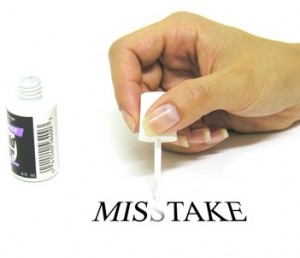 Last week was truly hectic on mobile front. On 22nd WSJ broke the story that Nokia is seeking replacement of CEO Olli Pekka Kallasvuo, which was then followed by rumors of breaking its four years old partnership with Siemens AG ( Read NSN). Certainly all isn’t well in Nokia camp. For CEO Mr. Kallasvuo, since taking up charge of company, just one year before launch of Apple’s flagship device iPhone ( in 2007), nothing is going right for company. But what’s wrong with company, started way back in 1865, which boasts operations in 130 countries across globe and having 11 R & D centers with more than 1, 24,000 employees on roll, in just span of 3-4 years? Is it just Smartphone woes or Symbian problems? Or there’re too many worries to hold back? Let’s check it out.
Last week was truly hectic on mobile front. On 22nd WSJ broke the story that Nokia is seeking replacement of CEO Olli Pekka Kallasvuo, which was then followed by rumors of breaking its four years old partnership with Siemens AG ( Read NSN). Certainly all isn’t well in Nokia camp. For CEO Mr. Kallasvuo, since taking up charge of company, just one year before launch of Apple’s flagship device iPhone ( in 2007), nothing is going right for company. But what’s wrong with company, started way back in 1865, which boasts operations in 130 countries across globe and having 11 R & D centers with more than 1, 24,000 employees on roll, in just span of 3-4 years? Is it just Smartphone woes or Symbian problems? Or there’re too many worries to hold back? Let’s check it out.
What would you prefer to have while buying a mobile phone? Better hardware/software or better user experience? Apart from your budget, I feel, these days User Experience (UE) is the key before making a purchase decision. This question may appear irrelevant in this blog post, but perhaps answer of this question will point to answers of some of the questions we are going to raise in this blog subsequently. Are Nokia smartphone users lagging behind in UE?
According to Strategy Analytics latest report, smartphones shipment rose 43{af589cdba9d77786c8c861317dbad60bba1e2ebbf56e2ffab874a1b59fde9ce3} annually reaching it to 60 million units during Q2 2010 and among these Nokia shipped 24 million units, which is approx 40{af589cdba9d77786c8c861317dbad60bba1e2ebbf56e2ffab874a1b59fde9ce3} of global smartphone shipments. Nokia is leading the smartphone shipments tally, distancing itself from RIM’s 11 million smartphone shipments, by more than 12 million units margin. This is something huge to fill up in just 2-4 years span. Apple, the company which stole the smartphone show with the launch of iPhone in 2007, has managed to ship 8 million smartphones globally, with just 14{af589cdba9d77786c8c861317dbad60bba1e2ebbf56e2ffab874a1b59fde9ce3} market share, ranked 3rd in the listing. If Nokia is still holding 40{af589cdba9d77786c8c861317dbad60bba1e2ebbf56e2ffab874a1b59fde9ce3} of smartphone market share with Y-o-Y growth of 42{af589cdba9d77786c8c861317dbad60bba1e2ebbf56e2ffab874a1b59fde9ce3} (second only to Apple’s 61{af589cdba9d77786c8c861317dbad60bba1e2ebbf56e2ffab874a1b59fde9ce3}), then what’s the issue?
Let’s keep finance apart. (Read: Nokia worried about falling profit margins). I feel the glitch is with Nokia’s high end devices user experience. Despite impressive Q2 smartphone shipment results, Nokia smartphone UI/UE doesn’t match to that of Apple/Android devices. If we assume that Nokia still produces better hardware of it high end devices, then problem remains with its Software, which is the nut-blot of the entire user experience. Traditionally, if you are talking about Nokia’s flagship OS platform Symbian, then you should be aware of these two simple facts. First, Symbian is Open Source and second, UI layer isn’t part of Symbian OS architecture. The UI discussions are booming topics at Nokia too. But where does Nokia stand while summing up all these aspects?
There’s lots of talk, little action. We have yet to see improvements from Symbian^2 to Symbian^3. N8 (based on Symbian^3), which is touted as best ever smartphone device by Nokia, hasn’t reached to masses. But already reviews show that N8’s UE is nowhere to that of iPhone/Android devices and still there’re people talking too much about Symbian^3 platform. Then why Nokia is sticking to Symbian? I feel Garner Analysts Nick Jones has clearly pointed out the problem with Nokia. Nokia is doing too much to save face, but not all in right directions. If you read some of the posts at Symbian Blog, then you would notice that Nokia is still not making enough efforts to improve UE on Symbian devices. Rest is not assured!
An excellent post here summaries few facts about Symbian Development problems. According to the post, the main bottleneck in developing super UE on Nokia devices arises from the fact that:
Symbian developers always view phone manufactures as their primary customers, while platforms like Android/iPhone view mobile developers as their primary targets, with phone manufacturers as conduit to get to the developers.
This is also evident from Visionmobile’s Mobile Developer survey, which states that although 75{af589cdba9d77786c8c861317dbad60bba1e2ebbf56e2ffab874a1b59fde9ce3} of Symbian respondents use Ovi store for their app needs, 20-25{af589cdba9d77786c8c861317dbad60bba1e2ebbf56e2ffab874a1b59fde9ce3} of rest are considering iPhone/Android market as better options. This is perhaps due to the fact that Symbian is the hardest among the three to master with little RoI. And according to GSMA, even if you consider App store download numbers, Ovi App store downloads top 1.7M downloads per day, which falls significantly behind to even Android market download rate. (100 downloads/sec). Counting the app number in app store, Ovi store has just more than 13000 applications in store as compared to 1, 00,000 in Android market and approx 2, 25,000 in Apple Store at July-2010 end.
Now what about Meego, the Mobile OS created by Nokia & Intel, after merging Maemo & Moblin resp in Feb-2010? The Meego OS strategy is even more confusing and according to OPK:
Symbian is about leveraging scale and expanding the smartphone category to cover a broad mass market footprint. In contrast, MeeGo is about leveraging speed and agility to create industry leading flagship solutions. Symbian and MeeGo have different sweet spots. We intend to capitalize on the unique strengths of each platform
I think you have to read between lines to understand it clearly. And that’s why I said, there’s lot of talk about Symbian^3, Meego, N8 & even Ovi App store, but every-time it failed materialize as Nokia failed to keep track of its own words and promises earlier.
And let me answer the question, which I asked at start of this post- will you buy a Nokia smartphone is coming days? According to Yougov’s latest survey report, of smartphone owners only third will be buying Nokia handset as compared to 46{af589cdba9d77786c8c861317dbad60bba1e2ebbf56e2ffab874a1b59fde9ce3} in Dec-2009. The report itself cites few key reasons in drop in popularity, out of which, lack of applications in app store & poor quality of smartphone OS are two main reasons to take note of. Where does Nokia heading then?
There’re lots of issues here. First if you look at developer’s ecosystem, then Nokia is consistently failing to attract developers towards Ovi store. Despite adding number of feature into its flagship OS Symbian^3, according to a report, 20{af589cdba9d77786c8c861317dbad60bba1e2ebbf56e2ffab874a1b59fde9ce3} mobile developers are unwilling to commit to Ovi store. Even many developers (42{af589cdba9d77786c8c861317dbad60bba1e2ebbf56e2ffab874a1b59fde9ce3} of surveyed by report) feel that Ovi store is below avg as compared to other stores, which is a significant number to take note of. Then what Nokia is doing about this?
We have to see it yet. Failure in attracting mobile developers to Ovi is just one aspect. Improving Symbian device UE is another aspect which needs more attention. Making a platform Open source (Read Meego) hardly matters unless you have clear focus and strategy. With Meego, Nokia must share its vision with Symbian developers about its focus on both platforms. Nokia is a giant in its own regard, but unless you pay attention to what’s lacking, every effort to improve is futile. Nokia must understand this simple fact.
( There’s an interesting closing post by The Guru, before he closed Symbian-Guru.com recently. All is certainly not well for Nokia)

